The content of the article
- 1 How often to transplant ficus
- 2 What land is suitable for ficus transplantation
- 3 How to disinfect the soil for ficus
- 4 What material should a ficus pot be made of?
- 5 What size take pot for ficus
- 6 Is drainage needed for ficus
- 7 How to transplant ficus
- 8 Some recommendations
- 9 Video: how to easily and quickly propagate ficus
Despite the fact that ficus has long been grown by flower growers on window sills, few people know about competent care. The theme of changing the pot is especially painful. How to transplant ficus at home? There are many nuances. Now we will analyze everything in detail.
How often to transplant ficus
This plant has a rich green mass, it consumes a lot of food, especially in childhood. Therefore, ficuses up to 6 years old are transplanted every year. This will change the soil and ensure normal shoot growth.
Plants older than 7 years practically do not transplant, but only regularly update the topsoil in the tank. This does not mean that the ficus has become quite old soil. Just by the age of 7, the plant often reaches a height of 2 meters and has a large green mass. Such a miracle is difficult to transplant without damage, so they are limited to a partial change of land.
Tip. Without fanaticism, loosen the topsoil, otherwise when it is replaced, tear off small feeding roots.
What land is suitable for ficus transplantation
Many do not rack their brains, but simply buy ready-made soil in a store. You should not do this, because the package often contains lowland peat with a lot of unnecessary impurities. Indeed, even ordinary sand strongly cementes the soil, which has a bad effect on air permeability and prevents water from absorbing during irrigation.
- turf land
- fine gravel
- greasy garden ground
- well rotted manure or compost
- horse peat
All this good is taken in equal quantities, then mixed well. Now you need to disinfect the mixture and you can safely transplant. Ficus of all varieties will like this soil.
Tip. Do not take sod or land off roads, highways or highways. Everyone understands that there is a huge amount of harmful substances. Take the time to go to the forest or park.
How to disinfect the soil for ficus
There are only 3 methods available and easy to do at home.
Freezing The prepared soil is poured into a dense bag, then placed in the freezer for a day. They take it out, allow it to thaw, freeze it again for a day. After the second thawing, the ground is ready for transplanting.
Calcination. The soil is poured into a baking sheet with a layer of not more than 5 cm, then placed in the oven. Processing time 30-32 minutes, temperature + 105-110 ° С. After cooling, the soil is ready.
Potassium permanganate. The entire volume of the earth is watered with a strong hot (+ 90 ° С) solution of potassium permanganate until completely wetted. Then the container with the soil is closed with a dense film or foil for 1 hour. The soil is ready for transplanting in 12 hours.
Tip. Be sure to spill the ground with phytosporin solution. Let beneficial microorganisms develop in a sterile environment.
What material should a ficus pot be made of?
It doesn’t matter at all. The plant feels great both in plastic and in ceramics. The only wish: for adult ficuses, they choose a clay pot or even a heavy wooden tub. And the point here is not the inertness of the material. Everything is completely pragmatic. Just such a capacity often has a decent weight, so the tree does not tumble. And the plastic container is very light, it is likely that the ficus will tip over.
What size take pot for ficus
Despite the impressive volume of the aerial parts, the root system of all ficuses is very small.Therefore, do not transplant the plant into a huge tub. With this landing, the roots will not be able to master the entire volume of soil. She quickly acidifies, begins to become covered with a coating and smells bad.
It should be guided by the principle of plus 2. That is, the new pot should be larger than the previous one no more than 2 cm in diameter.
The exception is adult specimens more than 2 m high. They will have to be transplanted in containers with a volume of at least 20 liters. Again, just so that the flower does not roll over. But along with this, it is necessary to replace part of the land with a new one once a year, because the transplantation of such large plants is quite problematic.
Is drainage needed for ficus
Necessarily needed. Even if there are already special openings in the tank, there should still be a small drainage system. The fact is that the root system of all ficuses reacts very negatively even to short-term stagnation of moisture. Root root decay begins almost immediately, and there it is a stone's throw to diseases or severe leaf fall.
It is better to protect your pet from such unpleasant surprises than to frantically rush about in search of treatment. A good drainage function is performed by:
- gravel
- broken brick
- pebbles
- expanded clay
- ceramic or clay shards
And the eggshell, peat, sphagnum are completely unsuitable. These materials increase the acidity of the soil, and ficuses really do not like such a soil. Plus, such drainage is very rapidly compressed and will cease to fulfill its function.
Tip. When laying, make sure that the openings on the bottom of the container are not blocked by small pebbles or shards. Otherwise, such drainage is worthless.
How to transplant ficus
Well, all the subtleties and necessary nuances are described, now you can proceed directly to the transplant process. If the arms grow out of the shoulders, then such an operation will not be difficult.
Do not transplant ficus immediately after watering. It will be problematic to get it out of an old pot with wet, swollen soil, and dirt will also be transported. But a slightly dried earthen lump is easily removed.
You need to lightly knock on the walls of the container, then with a sharp knife to draw between them and the soil, separating the grown roots. Now carefully pull the ficus out of the base of the trunk. A little shake off the soil from the roots, inspect them for rot or disease. Nagotov should already have a new pot with drainage and a small amount of soil at the bottom. Ficus is carefully placed in it along with part of the old soil. The distance between the roots and walls of the pot is carefully covered with new soil. If necessary, you can help yourself with a stick or even a spoon.
It is not necessary to crush the earth much, it will settle after watering, but it will remain breathable. Then you can just add a little more on top. They only carefully remember at what height the growth point of the ficus was. Deepening or lifting it strongly is not recommended. Otherwise, the plant will adapt for a long time, or even get sick.
At the end of the procedure, the pot is returned to its permanent place of residence and well spilled. It is advisable to spray ficus with a solution of any adaptogen 1 time. Aloe juice, zircon, epin - they greatly help the plant easier to transfer the transplant and activate their own vitality.
Tip. The loss of several leaves after transplantation is a completely natural process. But the fall of more than 3 sheets per day already indicates a violation of the technology and a reason to look for your mistakes when transplanting.
Some recommendations
- You should not transfer ficus into a new pot every year if it feels great. Protruding roots from drainage holes or above the ground serve as a signal for transplantation. A stunted growth without signs of depression or illness also indicates the need for soil replacement.
- Do not try to transplant adult ficus alone. Get an assistant.Together it is much easier to transfer such a colossus into a new pot without harm and unnecessary damage.
- Never shake ficus while transplanting. He has very fragile shoots and petioles, which can break off from any careless movement.
- Instead of gravel, you can add pieces of charcoal to the soil. Do not try to put chopped bark in the soil mixture, as some sources recommend. This makes the soil very acidic, and ficuses do not like this composition.
- After the transplant, it is forbidden to feed the plant for at least a month. Otherwise, there may be an overabundance of nutrients, to which the ficus will react in a characteristic manner - it will discard the leaves. Let the plant adapt first, get used to the new soil. As soon as signs of growth appear, you can begin to give top-dressing in small doses, gradually bringing to the usual norm.
How to transplant ficus at home? It turns out very simple. The preparation of materials takes more time than the process itself. If everything is done correctly, the transplant will take place quickly and painlessly for the plant. Leaf fall, which so all varieties of ficus sin, will not happen.
Video: how to easily and quickly propagate ficus


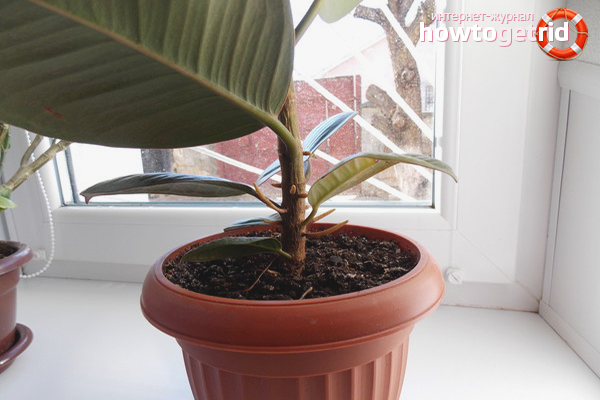

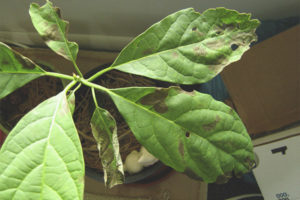
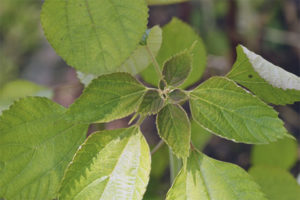



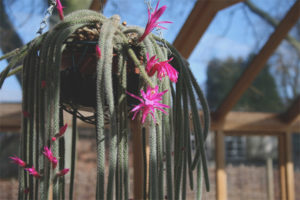
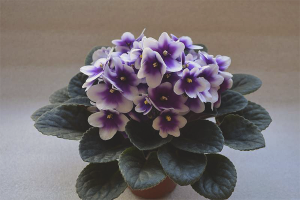
Submit